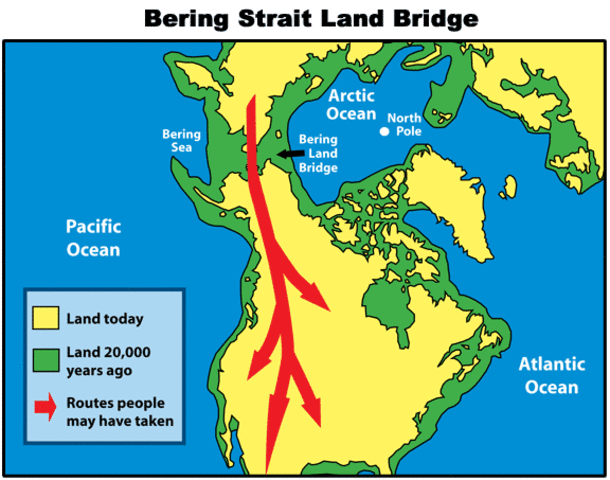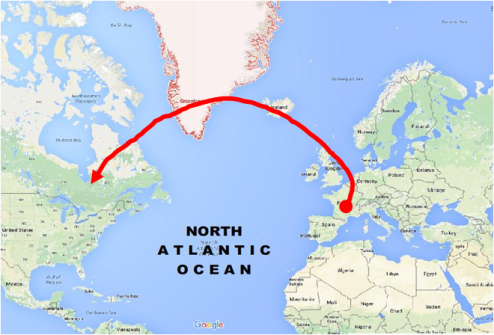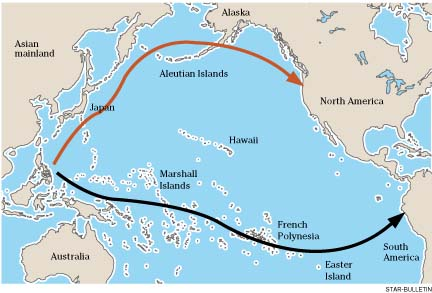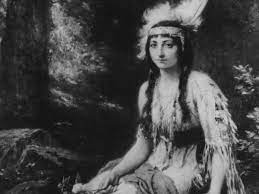
History Alive Chapter 1: The First Americans
==The Bering Strait Land Bridge Theory
==This theory suggest that the first Americans crossed a land bridge between Alaska and Siberia during the ice age

Solutrean Theory A theory that claims that the first americans travelled to the americas across the Atlantic Ocean

==Coastal Theory
==According to this theory, the first Americans followed the pacific coast around the ice sheets when crossing America.

Since Columbus wanted to sail to India he went west unlike the other sailors, and by that way he found the Americas
Columbus died thinking he reached the Americas
The voyages that Columbus had caused many people wanting to go to the Americas, this triggering an exchange of animals, plants, people, diseases back and forth across the Atlantic Ocean, otherwise known as the Great Columbian Exchange
The Great Columbian Exchange caused many American Indians to die because of the spread of new diseases Europeans colonizers brought to the Americas
Since American Indians kept dying, colonizers needed someone to work for them and this triggered slavery to be used in the Americas
Europeans went to west Africa and traded goods (such as guns) for slaves,
after this they made the slaves sail to the Americas on crowded ships filled with diseases,
they sold the slaves, the slaves produced goods such as cotton
The Spanish empire was able to confiscate many territories, including Mexico and the southern part of America, the Aztecs and the Incas too. Missionaries worked hard on converting native Indians to Christianity, and also brought slaves to these territories.
The 13 Original Colonies
settlers came here for religious freedom
**farming was hard due to harsh cold living conditions
**forest and sea provided good resources
Massachusetts
Rhode Island
Connecticut
New Hampshire
settlers came from diverse cultural backgrounds
filled with rich soil, valleys and wooded mountains
New York
New Jersey
Pennsylvania
Delaware
Maryland
Virginia
North Carolina
South Carolina
Georgia
wet and hot
perfect for making tobacco and other cash crops
wealthy colonists would live here
slaves would work here
rivers and wetland with sea
Leader of Jamestown was John Smith
At the first few weeks Jamestown suffered loss of food supply and native indians would not cooperate with trading along with the lack of skilled laborers when it came to farming
A Powhattan girl, named Pocahontas helped save the colony from starvation by forming peace between the Powhattan tribe and Jamestown, and aided the colony when in need

Cash Crop: crop raised in larger quantities for profit
English bill of rights: an act passed by the parliament in 1689 that limited the monarch’s power by giving certain power to the parliament and listing certain rights of the citizens
Parliament: The law-making body of England, consisting of the representatives throughout the kingdom that managed laws and taxes
Magna Cartaan: agreement made in 1215 listing the rights granted by king john to all free men of the kingdom
Right: A power or privilege that belongs to people as citizens and that cannot or should be taken away by the government
Charter: a formal document issued by kings that outlined a colony’s geographic boundaries and specified how it would be governed
Democratic: a form of government in which people have the power to rule themselves, often through elected representatives
Mayflower- an agreement that pilgrims wrote and signed describing how they govern themselves in the Americas
Mercantilism - economic policy in which nations tried to profit off by controlling trade and establishing colonies
Slave trade: the business of capturing, transporting, selling people as slaves
Colony a new settlement or territory established and governed by a country in another land
Columbus exchange: the exchange of animals, plants, diseases, and people across the Atlantic ocean between Europeans and the Americas
Slavery: The treatment of people as property. People who are said to be enslaved
Conquistadors - Spanish soldier-explorers, especially those who have conquered the native people of Mexico and Peru
Coureurs de bois - french fur trappers who learned many skills from the American Indians with whom they worked and lived with
Missionaries: people who travel to a territory or community to convert their religion
Cultural Region: an area in which a group of people shares a similar culture and language.
Culture: a people’s way of life, including beliefs, customs, food, dwellings, and clothing.
Environment: All of the physical surroundings in a place, including land, water, animals, plants, and climate.
Migrate: to move from one place and establish a home in a new place. A move of a large number of people is called migration, and people who move are called migrants.
Natural Resources: useful materials found in nature, including water, vegetation, animals, and minerals
==The Bering Strait Land Bridge Theory
==This theory suggest that the first Americans crossed a land bridge between Alaska and Siberia during the ice age

Solutrean Theory A theory that claims that the first americans travelled to the americas across the Atlantic Ocean

==Coastal Theory
==According to this theory, the first Americans followed the pacific coast around the ice sheets when crossing America.

Since Columbus wanted to sail to India he went west unlike the other sailors, and by that way he found the Americas
Columbus died thinking he reached the Americas
The voyages that Columbus had caused many people wanting to go to the Americas, this triggering an exchange of animals, plants, people, diseases back and forth across the Atlantic Ocean, otherwise known as the Great Columbian Exchange
The Great Columbian Exchange caused many American Indians to die because of the spread of new diseases Europeans colonizers brought to the Americas
Since American Indians kept dying, colonizers needed someone to work for them and this triggered slavery to be used in the Americas
Europeans went to west Africa and traded goods (such as guns) for slaves,
after this they made the slaves sail to the Americas on crowded ships filled with diseases,
they sold the slaves, the slaves produced goods such as cotton
The Spanish empire was able to confiscate many territories, including Mexico and the southern part of America, the Aztecs and the Incas too. Missionaries worked hard on converting native Indians to Christianity, and also brought slaves to these territories.
The 13 Original Colonies
settlers came here for religious freedom
**farming was hard due to harsh cold living conditions
**forest and sea provided good resources
Massachusetts
Rhode Island
Connecticut
New Hampshire
settlers came from diverse cultural backgrounds
filled with rich soil, valleys and wooded mountains
New York
New Jersey
Pennsylvania
Delaware
Maryland
Virginia
North Carolina
South Carolina
Georgia
wet and hot
perfect for making tobacco and other cash crops
wealthy colonists would live here
slaves would work here
rivers and wetland with sea
Leader of Jamestown was John Smith
At the first few weeks Jamestown suffered loss of food supply and native indians would not cooperate with trading along with the lack of skilled laborers when it came to farming
A Powhattan girl, named Pocahontas helped save the colony from starvation by forming peace between the Powhattan tribe and Jamestown, and aided the colony when in need

Cash Crop: crop raised in larger quantities for profit
English bill of rights: an act passed by the parliament in 1689 that limited the monarch’s power by giving certain power to the parliament and listing certain rights of the citizens
Parliament: The law-making body of England, consisting of the representatives throughout the kingdom that managed laws and taxes
Magna Cartaan: agreement made in 1215 listing the rights granted by king john to all free men of the kingdom
Right: A power or privilege that belongs to people as citizens and that cannot or should be taken away by the government
Charter: a formal document issued by kings that outlined a colony’s geographic boundaries and specified how it would be governed
Democratic: a form of government in which people have the power to rule themselves, often through elected representatives
Mayflower- an agreement that pilgrims wrote and signed describing how they govern themselves in the Americas
Mercantilism - economic policy in which nations tried to profit off by controlling trade and establishing colonies
Slave trade: the business of capturing, transporting, selling people as slaves
Colony a new settlement or territory established and governed by a country in another land
Columbus exchange: the exchange of animals, plants, diseases, and people across the Atlantic ocean between Europeans and the Americas
Slavery: The treatment of people as property. People who are said to be enslaved
Conquistadors - Spanish soldier-explorers, especially those who have conquered the native people of Mexico and Peru
Coureurs de bois - french fur trappers who learned many skills from the American Indians with whom they worked and lived with
Missionaries: people who travel to a territory or community to convert their religion
Cultural Region: an area in which a group of people shares a similar culture and language.
Culture: a people’s way of life, including beliefs, customs, food, dwellings, and clothing.
Environment: All of the physical surroundings in a place, including land, water, animals, plants, and climate.
Migrate: to move from one place and establish a home in a new place. A move of a large number of people is called migration, and people who move are called migrants.
Natural Resources: useful materials found in nature, including water, vegetation, animals, and minerals